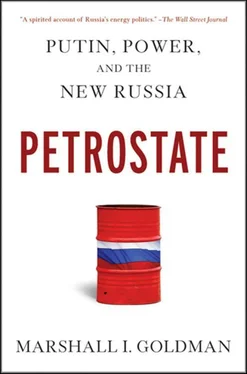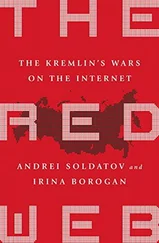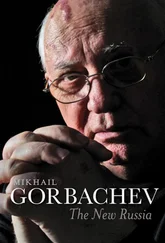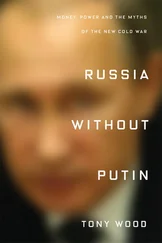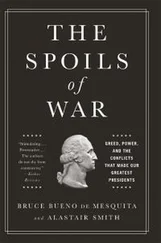These developments in turn attracted other prospectors, especially foreigners like the Swede Robert Nobel. Nobel arrived in Baku in March 1873 and soon came to exercise enormous influence in the area, not only as a producer but also as a refiner and marketer. 10By 1883 production exceeded 1 million tons; by 1887 it exceeded 2 million tons (50 million tons equals approximately 1 million barrels a day). Equally significant, in 1877 and again in 1882, 1885, and 1891, strong and increasingly effective tariffs were passed that helped to curb Russian imports of American kerosene. 11
However, it took more than tariffs to stem the flow. Russia had become an early battleground for oil producers seeking to carve out exclusive markets for themselves. John D. Rockefeller and his Standard Oil of the United States, as the world’s largest producer, had taken over a dominant share of the Russian market. Eventually high tariffs on imported oil made it less attractive to import, but before Standard Oil and its U.S. petroleum could be pushed out of the Russian market, the Nobels—Robert and his brother Ludwig— had to find some way to facilitate the shipment of their petroleum and kerosene from Baku to the urban centers of Moscow and St. Petersburg. Just as during the Crimean War it was easier to move troops from Paris and London to the Crimea than from St. Petersburg and Moscow, so it was easier to move kerosene from the United States to St. Petersburg than it was from Baku. Seeking a way to facilitate the flow of Russian oil to the north, in 1878 Ludwig, designed a pipeline to carry crude oil from the well to their refinery and then on to the Caspian Sea. To carry large enough quantities across the Caspian Sea to make the venture profitable, he also conceived of and constructed the first oil tanker, the Zoroaster . 12His tankers docked at Astrakhan, where the oil was transferred to barges that then moved up the Volga. A storage depot was established in Tsaritsyn (later to become Stalingrad and now Volgograd) where by 1881 the petroleum could be reloaded onto railroad cars, a convenience that was particularly important in the winter when the Upper Volga was frozen. One result of Nobel’s innovation and the government’s higher tariffs was the all but complete halt of kerosene imports from the United States. Imports, which were 4,400 tons in 1884, fell to 1,130 tons in 1885 and to an almost unnoticeable 22 tons in 1896 13—one loss (temporarily) for the Rockefellers.
The cultivation of domestic markets was followed by an effort to expand foreign markets. For obvious geographical reasons, Persia had always been a major consumer of Baku’s oil. For equally obvious geographical reasons—that is, Baku’s location on the essentially landlocked Caspian Sea—it was difficult to supply other regions of the world, including St. Petersburg. Since this was before Stalin came along to build his canal network, the challenge at the time was to break through the barrier of the Caucasus Mountains to gain access to the Black and Mediterranean Seas and thus to the ocean routes beyond.
Only in 1878 when the Russians pushed the Turks out of Batumi on the Black Sea did a new route became a realistic possibility. Shortly thereafter, led by A. A. Bunge and S. S. Palashkovsky, a group of Russian oil producers in the Baku region obtained a franchise to build a railroad over the mountains from Baku through Tbilisi to Batumi. Since they were short of funds, they sought the help of the Nobels. Initially, the Nobels refused, fearing that their dominance of the Baku trade, especially their St. Petersburg markets, would be jeopardized by the additional competition. Not to be denied, Bunge and Palashkovsky turned instead to the French house of Rothschild. Having recently backed a refinery on the Adriatic, the Rothschilds were anxiously searching for a source of crude oil to free themselves from dependence on Rockefeller’s Standard Oil. 14The cork on Russian exports was pulled when that trans-Caucasian railroad was completed in 1883–1884. Table Intro.1 indicates how overall exports increased. Exports from Batumi, which totaled 3,300 tons in 1882, increased to 24,500 tons in 1883 and 65,000 tons in 1884, an amount equal to previous total exports from all Russian ports. 15The flow soon became even greater when a forty-two-mile pipeline replaced the most rugged portion of the railroad route in 1889. 16
RUSSIA AS AN OIL EXPORTER
The increased flow of Rothschild’s petroleum from Batumi and Nobel oil via the Volga put competitive pressure on Standard Oil’s markets in England. The era was one of oil abundance, and sellers vied to under-price their competitors. Angry over the threat presented by Russian oil to his English and European markets, Rockefeller and Standard Oil retaliated in what was to become a familiar pattern by cutting prices. For a time this tactic succeeded, but ultimately the Russian producers prevailed and carved out a share of the market for themselves. Whereas the combined Rothschild-Nobel share of the British market amounted to only 2 percent in 1884, by 1888 it had expanded to 30 percent. 17Overall, however, compared to worldwide American exports, Russian exports were relatively more important only in Asia. Thus in 1897, 75 percent of American exports went to Europe and 16 percent to Asia, whereas only 59 percent of Russian exports went to Europe but 38 percent went to Asia. 18The pattern was much the same in 1913.
For almost twenty years the petroleum flowed so readily in the Baku region that there seemed to be no reason to develop new fields or exercise much care in pumping existing fields. The waste was enormous, not to mention hazardous. In what was to become a standard reaction in the years to come, visitors were appalled by the inefficiency, sloppiness, and lack of care exercised by Russian petroleum operators. 19
Still, little changed as long as the oil kept flowing. Moreover, the per capita consumption of oil—or more appropriately, petroleum products— was much lower in Russia than it was in other advanced countries in the world. This was due in large part to the lower standard of living at the time in Russia. In the late nineteenth century, for instance, Russian consumption of kerosene per capita was one-half of that in Germany. 20And since domestic productive capacity exceeded domestic petroleum needs, petroleum producers generally sought to divert a portion of their output to foreign markets. For example, during the good production years of 1903 and 1904, the Russian-based producers exported 16 percent of their total production (see Table Intro.1). In 1904 absolute petroleum exports reached their peak of 1.8 million tons. However, because domestic consumption by that time had increased, the relative share of petroleum exports earlier in 1890 and 1892 was actually higher; then 22 percent of all petroleum produced was exported.
Not surprisingly, therefore, Russian petroleum exports often exceeded those of the United States during the late 1890s and the early twentieth century. And if they were not the largest exporter, the Russians were certainly the second largest. It is difficult to tell precisely which years the Russians out-exported the Americans because the data are incomplete. When export-import data for crude oil are available for comparison, the United States statistics on imports and exports of petroleum products begin only in 1920. 21Net American exports of refined products were high, but oddly enough, American imports of crude oil from 1920 to 1924 were even higher.
Nevertheless, as Table Intro.1 indicates, Russian production exceeded American production from 1898 to 1902, and virtually all of it came from the wells around Baku. In that four-year window, Russia was the largest producer of petroleum in the world. The Middle East was viewed as a barren desert then, and it was not until 1938 that the ARAMCO Consortium discovered oil in Saudi Arabia. The only other oil-producing areas of note at the turn of the century were in the Dutch East Indies and Mexico. Even with that, in 1897 Russia and the United States accounted for about 95 percent of the world’s production. 22
Читать дальше
